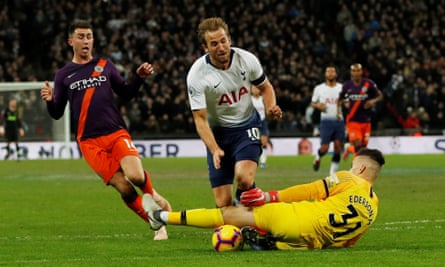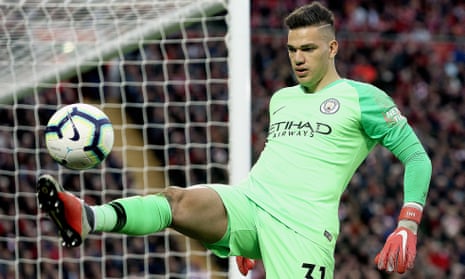In January 1912, two members of the Football Association’s rules review committee went to White Hart Lane to watch Tottenham’s Division One match against Sunderland. The game finished 0-0 but the clean sheet was not the aspect of Leigh Richmond Roose’s performance that caught the eye. At every opportunity the goalkeeper had bounced the ball from his goal to the halfway line and launched it long into the Spurs box. This, the rules men decided, would not do.
For Roose, this was nothing out of the ordinary. This was just what he did. The laws allowed him to handle the ball to halfway, although not to run with the ball, and he was prepared to dodge the barges of opponents to take advantage. It was only when he did it in London, where FA officials might take note, that it became a problem.
That summer the law changed. Goalkeepers, who had only three years earlier been compelled to wear a different strip to their teammates, were restricted to handling in their own penalty area. The process of separating the goalkeeper from the rest of the side had reached its zenith. Always treated with suspicion, the goalkeeper was now marked out by the colour of his shirt and to be confined as far as possible in his box.
The history of the goalkeeper in the 106 years since has been one of increasing integration, which perhaps reached new levels on Tuesday as Ederson, under pressure from Troy Deeney, played a casual no-look pass to Vincent Kompany. What am I, he seemed to be saying, but a midfielder in gloves? This is the modern way: it’s only a couple of weeks since the Paris Saint-Germain Under-19 coach, Thiago Motta, began talking of his dream of a 2‑7‑2 formation, regarding the goalkeeper is an auxiliary midfielder.
The goalkeeper still wears a different colour but he is now clearly a part of the team. From the 50s the goalkeeper began leaving his box. When Gyula Grosics, in Hungary’s 6-3 win over England at Wembley in 1953, dealt with a long hanging ball by darting a yard or so outside his box to volley clear, the commentator Kenneth Wolstenholme had palpitations at the oddity of it all; now we would wonder why he had not controlled the ball and tried to play a pass rather than squandering possession with a hasty clearance.

The term sweeper-keeper was coined by the Manchester City manager Joe Mercer to describe Tommy Lawrence after watching his performance for Liverpool against Everton in the Charity Shield in 1966. It’s now an essential part of the game for any side who wants to press: leave space behind the defensive line and you need a goalkeeper comfortable in playing outside his area to deal with through-passes or balls over the top. The implementation of the back-pass law in 1992 meant all goalkeepers had to be at least relatively comfortable with the ball.
More than that, the keeper, who often has time on the ball, can become a de facto playmaker, something on which Johan Cruyff always insisted.
His mentality is made clear by the advice he gave the former Ajax goalkeeper Piet Schrijvers. “You should try to find your position around the edge of the area. Then you have continuously to give directions and six or seven times you’ll need to run out fast to make a save. Above all, you have to learn that the great fear of goalkeepers that they will be beaten by a ball lobbed over their head from the halfway line is not based in reality. If he plays like that, in the interests of the team, then it doesn’t matter … if once in a while he doesn’t save a high ball.”
That is why Pep Guardiola, the most devout of the post-Cruyffians, felt the need to replace Joe Hart when he took over at City. Hart simply is not good enough on the ball to do the job Guardiola needs him to do. A goalkeeper needs not only to be able to pass but also to actually keep the ball out of his own net, which became an increasing problem for Claudio Bravo. Ederson, though, can do both.
Whether he is the best passer among the Premier League’s goalkeepers is open to debate – his pass completion rate is a little below that of Kepa Arrizabelaga and a little above that of Alisson – but he is part of a new generation of goalkeepers for whom passing is seen as a prerequisite and who have built on that to help set the tempo and build the play from the back.
The huge advantage Ederson has is his long-range passing which, as Tottenham found at the Etihad last season, means an opponent cannot simply push men high on the full-backs and think that will thwart City, because they can then simply play accurately to players high up the pitch.
Quite what the 1912 rules review committee would have made of it is anybody’s guess but football has now reached a point at which the best sides tend to have 11 outfielders; it’s just that one is allowed to use his hands.

